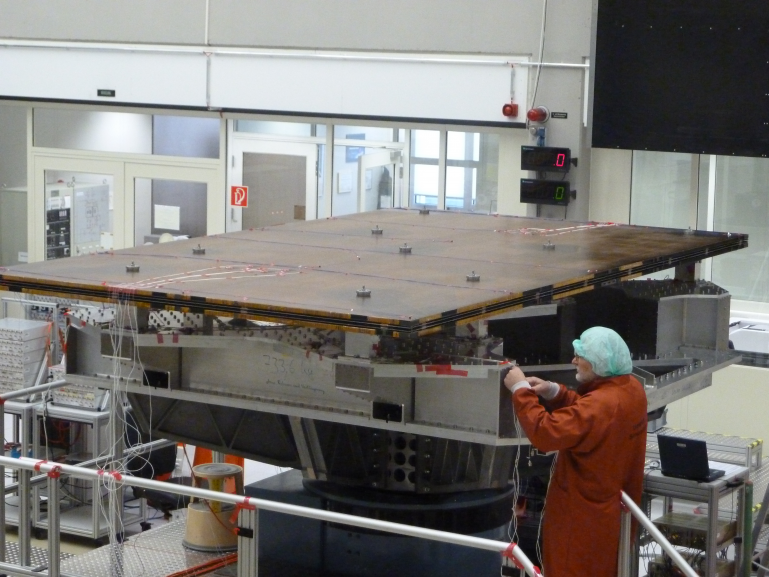
-
StatusOngoing
-
Status date2014-12-01
The aim of the "NGSA Dynamic structural verification of semi-rigid lateral panel stack" program is first and foremost to demonstrate the feasibility of this new hybrid solar array concept. This is achieved experimentally, by designing and building two lateral panels, which are sandwiched between two rigid panels and exposed to representative sine and acoustic vibrations. The lateral panels are equipped at high load areas with cells of various mass and mechanical properties. Secondly, appropriate analytical tools are developed as part of this project to model and to predict the behaviour of these hybrid arrays.

The Next Generation Solar Array (NGSA) is a high efficiency solar array with significantly reduced mass, e.g. in comparison to a five panel Eurostar NGSA delivers the same EOL power after 15 years in orbit at less than half the mass. Further, the NGSA concept is easily scalable to support a wide range of power requirements and offers tremendous growth potential up to 100 kW. In the same way, it can be adapted to various stowage volume demands by tailoring the number and size of the rigid backbone panels.
The described product benefits are achieved first of all by the hybrid solar array concept of the Next Generation Solar Array (NGSA), i.e. the combination of a rigid backbone structure and lightweight lateral panels. This combination exploits utmost the benefits of the next generation of solar cells, which provide an efficiency of 35% and a 0.85 remaining factor at 1015 1 MeV electrons per cm2. Further, in order to provide enough clearance to antenna reflectors, sensors, and thruster beams the NGSA features a long two-foldable yoke, which allows enough distance of the solar array panels form the spacecraft body.
As first step, feasibility of the hybrid solar array concept is demonstrated. In the next phase the required technologies for the Next Generation Solar Array are developed. After qualification on component level a qualification model will be built and tested.
After successful completion of the feasibility study the Next Generation Solar Array is now under development at Airbus Defence and Space.



